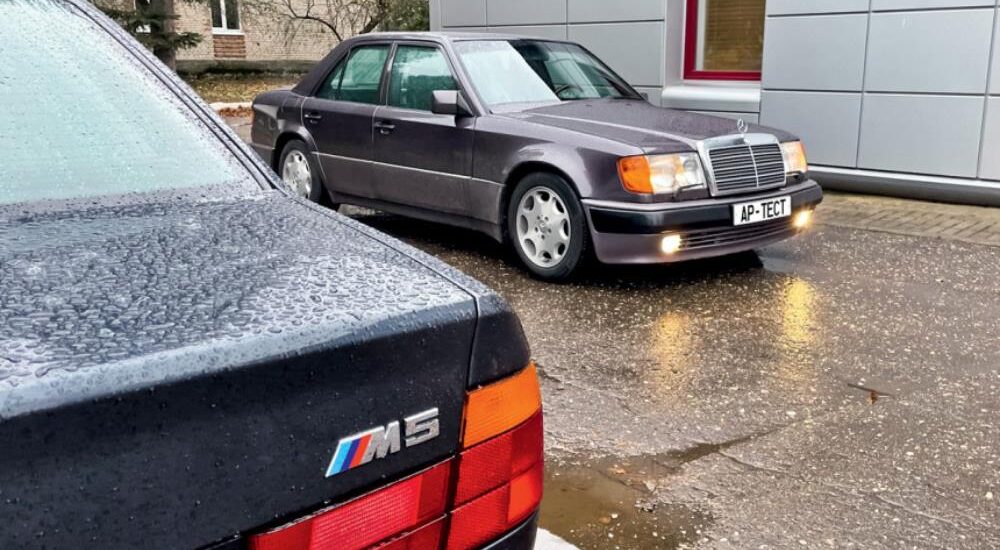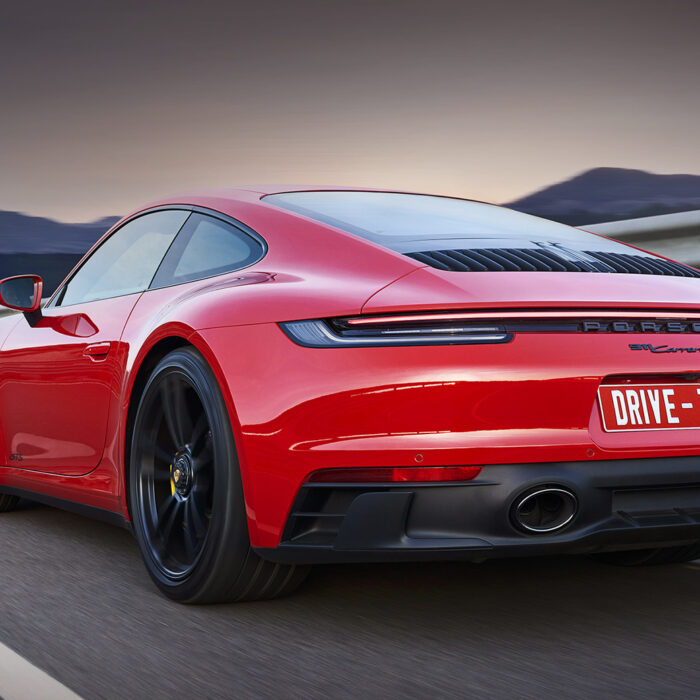当梅赛德斯发布 W124 时,宝马推出了 E34 进行反击。慕尼黑以 M5 的发布明确回应,斯图加特则迅速以 500 E 做出回应。有趣的是,尽管这两款超级轿车之间存在着巨大的差异,但它们却有着共同的起点——它们都是从卡车车身开始它们的旅程的。

W124 計畫始於 1977 年,最初的設計由 Peter Pfeiffer 和 Josef Gallitzendörfer 精心設計,並由造型中心負責人 Bruno Sacco 最終確定。
不可否认的是,宝马在 20 世纪 80 年代设定了竞争基调,其驱动力是超越梅赛德斯。竞争如此激烈,慕尼黑不得不加倍努力才能保持追赶。他们需要突破才能获得优势,1986 年 E32“Seven”的推出,一年后又推出了 V12 驱动的宝马 750i。当时的挑战是让“Five”复制这一成功。
E34 轿车于 1988 年推出,其制造目标只有一个 — 超越强大的 W124。推出四年后,梅赛德斯仍然是汽车工程的奇迹。在我们的复古测试中,我深入研究了 BMW Praxis,这是一份经销商目录,用于培训销售人员了解新的“Five”。这本 240 页的手册是关于 E34 的宝库,充满了其他地方很少能找到的见解。
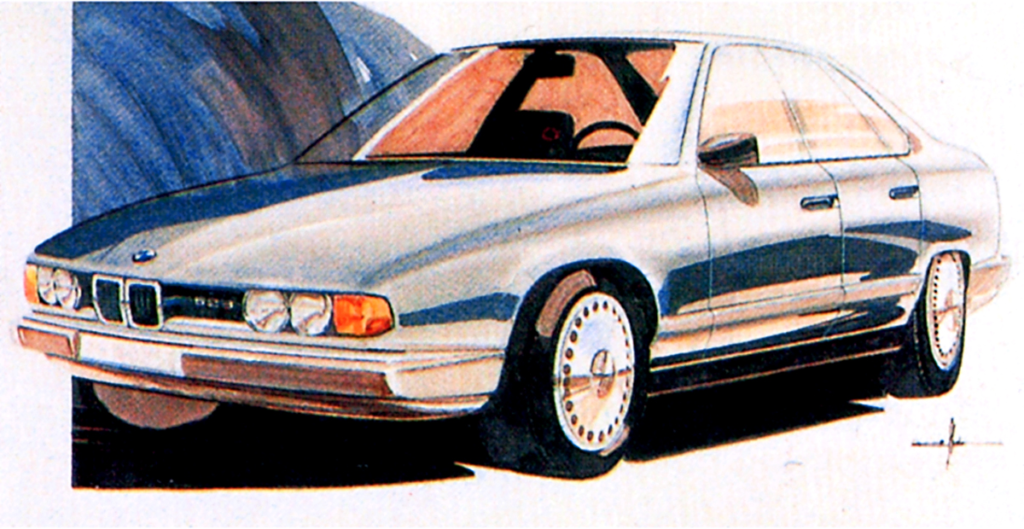
E34 的義大利基因由 Ercole Spada 於 1982 年繪製。「五」的工作由傑·梅斯繼續,並在克勞斯·路德的指導下完成。
从营销策略到技术创新,竞争非常激烈。宝马分析了不同职业的市场份额,指出中层管理人员更喜欢“螺旋桨”标志,而高层管理人员和自由职业者更喜欢“星”标志。宝马还吹嘘其在空气动力学方面的改进,声称比其前代车型改进了 18%,阻力系数达到 0.30,同时保留了其标志性的格栅设计。他们巧妙地暗示,如果不是因为他们的标准轮胎政策,他们的成绩可能会更好——这是对梅赛德斯的嘲讽,梅赛德斯的最佳空气动力学数据是使用更窄的轮胎实现的。

BMW 認為功能性(縱軸)與美觀(橫軸)之間的平衡。事實證明,藍旗亞最不實用,而奧迪則被認為最不美觀。
梅赛德斯独特的雨刷系统可以清洁 86% 的挡风玻璃,而宝马的加长雨刷则与此形成鲜明对比,后者的清洁面积与前者相当,但增加了一种机制,可在低速时提高刮片性能。同样,梅赛德斯宣称可以自动加热后视镜和喷嘴,而宝马则推出了一种加热锁机制,只需握住车门把手即可启动,这是一项深思熟虑的工程设计功能。

很明顯,公司在前端的工作方式有多麼不同。對於梅賽德斯來說,光學器件和格柵充當空氣動力學工具,有助於減少升力。對BMW來說,車頭燈主要是品牌的形象。儘管如此,BMW Praxis 目錄提供了有趣的數字:為了在 180 公里/小時的速度下克服空氣阻力,E34 需要 64 匹馬力,而在 200 公里/小時的速度下,它需要 87 匹馬力。這比具有類似鯊魚鼻的前身 E28 減少了 20%。
每款车型都推出了旨在超越其他车型的功能。梅赛德斯著名的五连杆后悬架与宝马对 E34 现有设置的改进相得益彰,包括电子控制减震器和 Servotronic 转向系统。宝马还通过其先进的 ASC+MSR 系统应对梅赛德斯的 ASR,该系统不仅解决了牵引力问题,还解决了减速期间的车轮锁死问题。
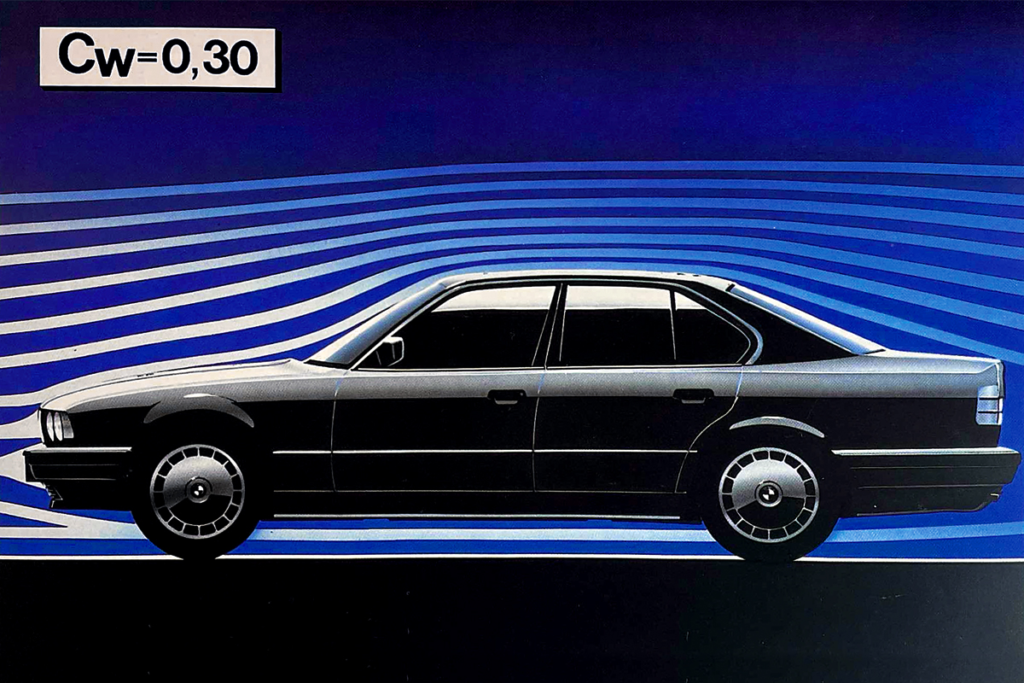
该目录甚至对 M5 的操控特性进行了解释,表明宝马有意将底盘调校为中性到轻微的转向不足,并通过油门输入过渡到转向过度,大概是为了抵消奔驰爱抬头的特性。
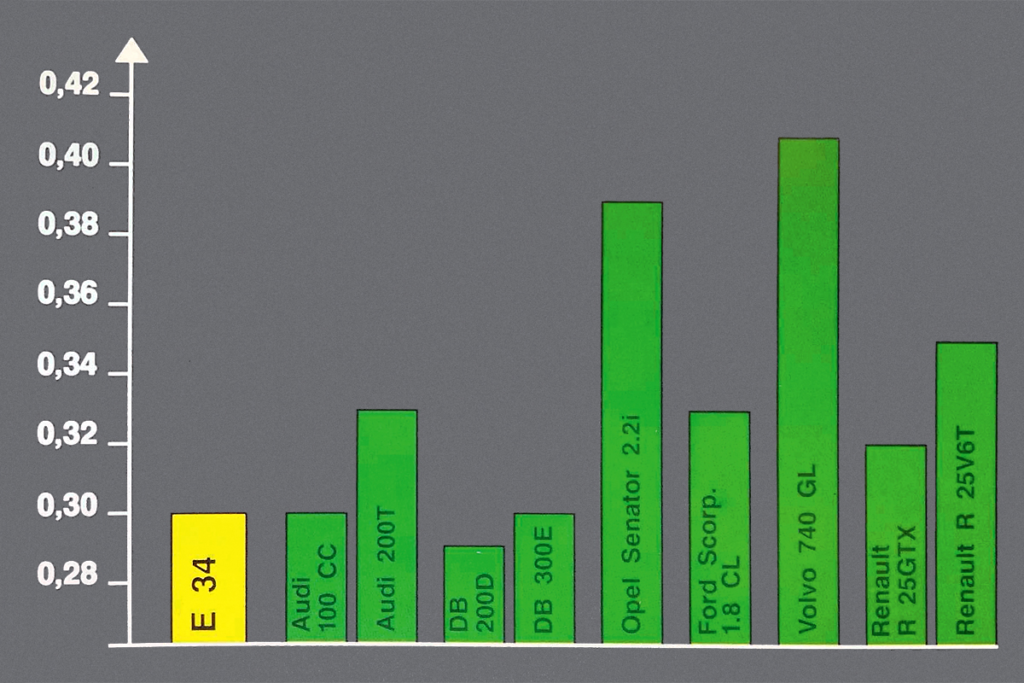
經典和當代的空氣動力學。為了趕上賓士,寶馬從奧迪撤走了員工。
这场持续不断的争强好胜之战不仅突破了技术界限,也凸显了根深蒂固的竞争。虽然 E34 暂时领先于 W124,但它无法复制 V12 E32 的革命性影响。尽管与“Seven”共享平台,“Five”似乎总是落后于斯图加特同行一步,追逐梅赛德斯率先推出的全轮驱动和安全增强等创新。
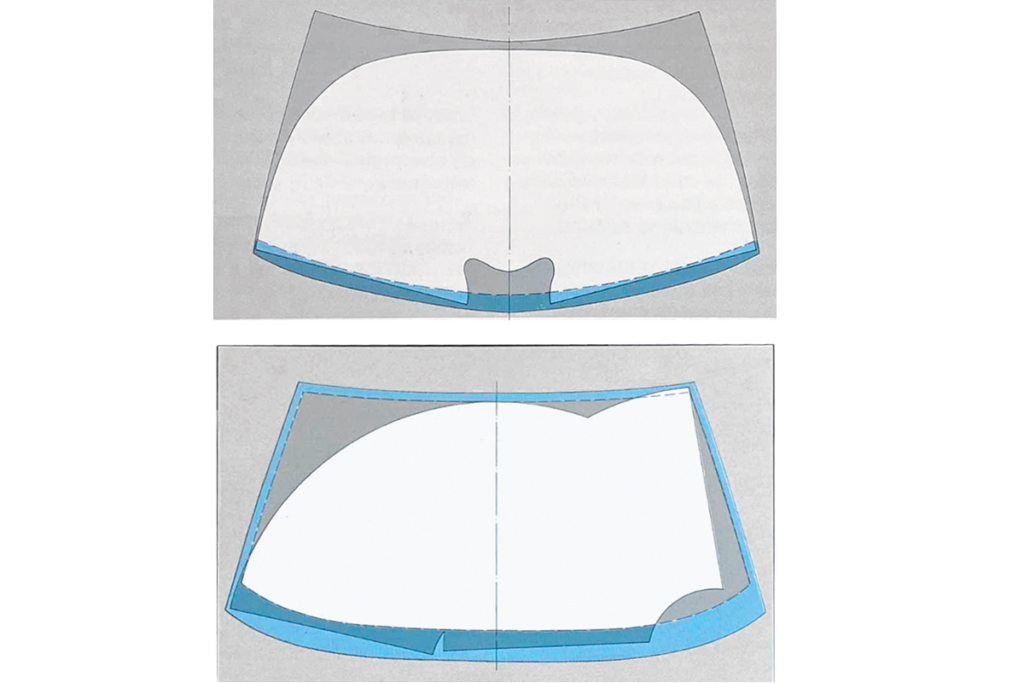
梅賽德斯的雨刷可到達頂角,為汽車行業提供創紀錄的擋風玻璃清潔面積。BMW堅持認為,左上角對於交通燈的可見度更為重要。
BMW M5 仍然是这场激烈竞争的见证,体现了对汽车卓越和创新的不懈追求。随着这些竞争对手不断将彼此推向更高的高度,他们留下了工程实力和性能的遗产,继续激励着汽车界。
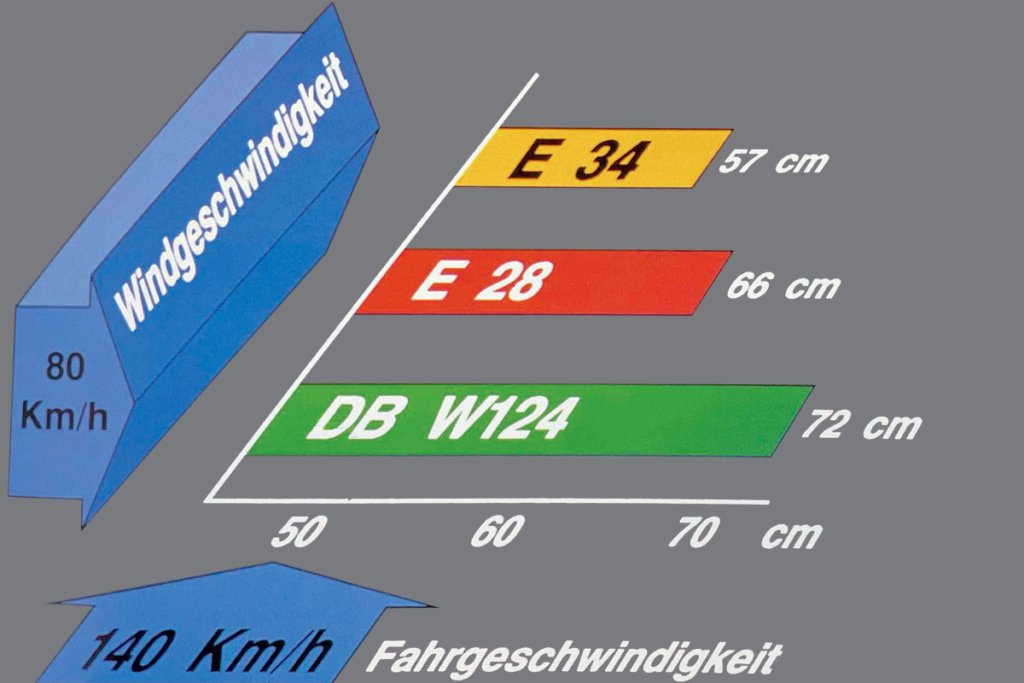
強調優於梅賽德斯的另一個原因是:在側風中,E34 的漂移比 W124 少。
当梅赛德斯推出 W124 时,宝马迅速推出 E34,并推出了自己的杰作 M5。斯图加特的对手 500 E 标志着两款截然不同的超级轿车之间激烈竞争的开始,这两款车型都拥有一个令人惊讶的起源:每款车型都以卡车底盘为基础。
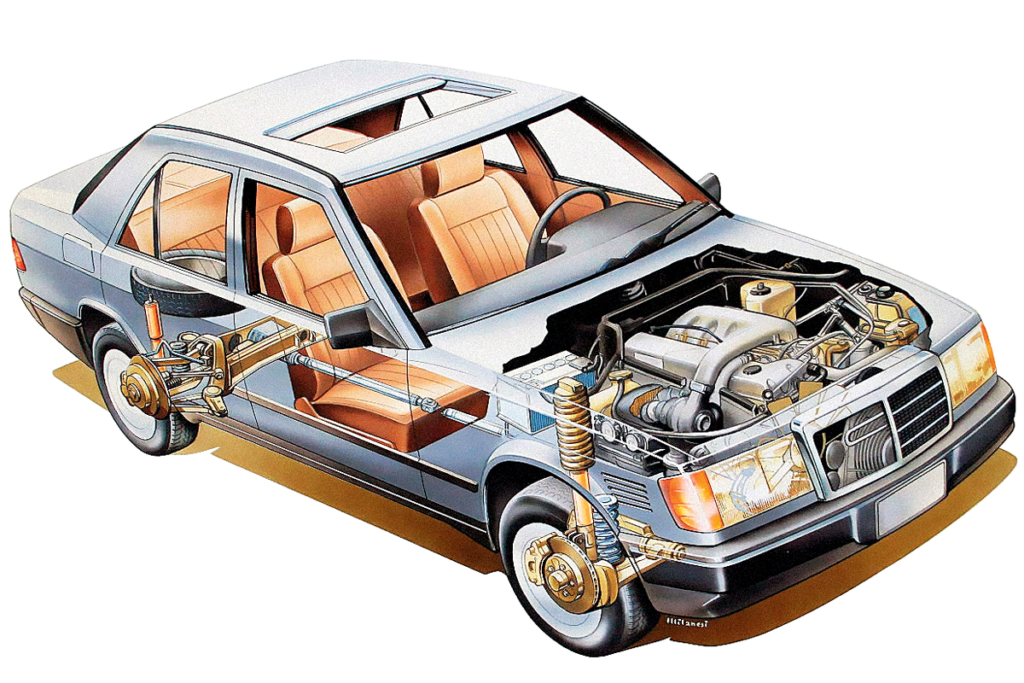
W124 底盤的主要技術亮點是後多連桿懸架,該懸吊稍早出現在較小的轎車 W201 上,隨後幾乎安裝在所有梅賽德斯乘用車上。它已被許多其他製造商複製。經過修改,這種基本的五連桿方案至今仍在使用。
20 世纪 80 年代,宝马热切地想要超越梅赛德斯。斯图加特的实力十分强大,迫使慕尼黑不得不加倍努力才能跟上步伐。为了超越梅赛德斯,宝马需要一些非凡的东西。1986 年,他们推出了 E32“Seven”,一年后,他们又推出了搭载 V12 发动机的宝马 750i,震惊了汽车界。挑战在于如何用“Five”复制这一成功。
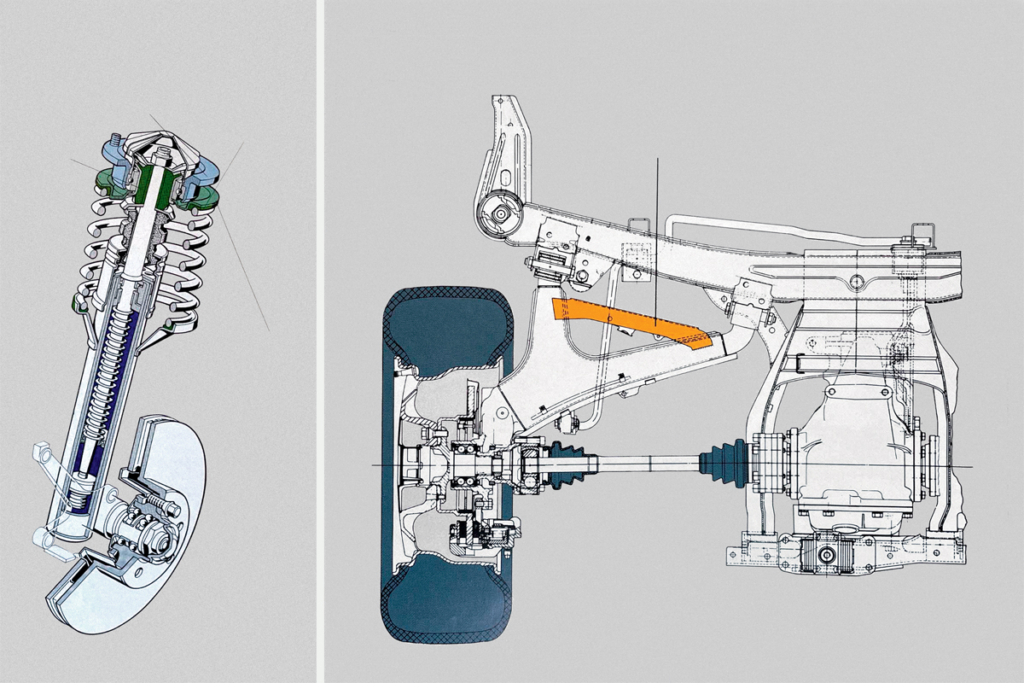
對於 BMW 525i 和 524td 以上的所有 E34 版本,均提供帶有獨立彈簧和減震器安裝座的麥花臣支柱。在後面,斜臂用支架加固。這是最後一個具有如此老式後軸的“五”。除了 M5 之外,還提供了更硬的運動懸吊作為選配。
E34 轿车于 1988 年推出,专注于一个目标——出色的 W124。推出四年后,梅赛德斯仍然代表着汽车工程的巅峰。
在我们回顾性测试期间,我花了几天时间研究一份独特的经销商目录 BMW Praxis,旨在培训销售人员了解新的“五”。这本 240 页的 E34 圣经涵盖了车辆的每一个细节和设计决策。它充满了独特的见解,售价为 30,000 卢布——证明了它的价值。值得注意的是,几乎每一页都提到了 W124,强调了明显的痴迷。
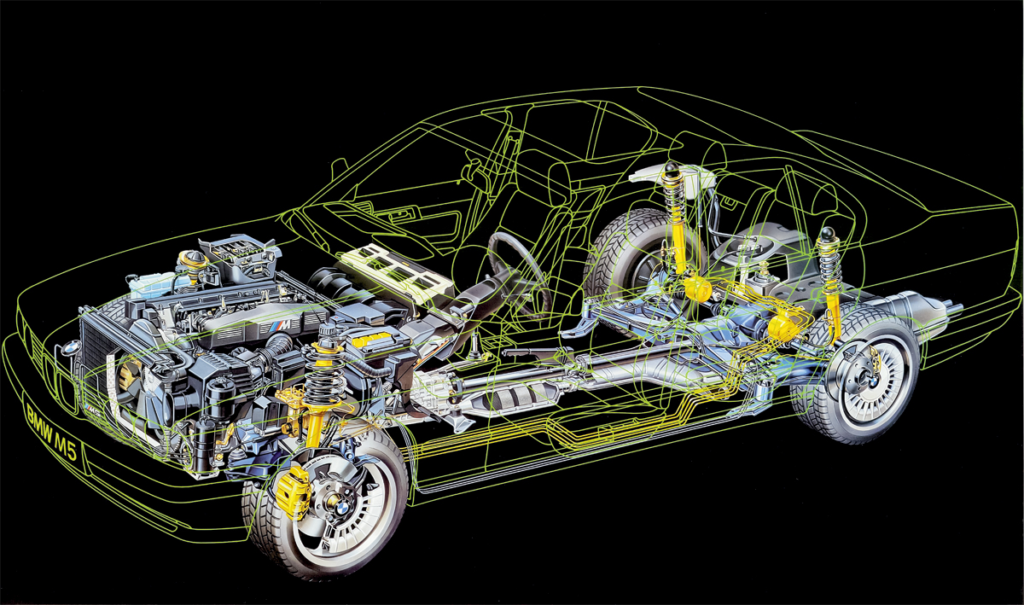
BMW類似的複雜多連桿懸吊直到1989年才出現在E31轎跑車上,然後出現在「七」E38和「五」E39上。但甚至在 Mercedes 500 E 發布之前,M5 E34 就標準配備了後減震器,該減震器具有液壓自調平機構,以保持恆定的車輪外傾角和間隙。
这场战斗始于营销策略,宝马深入研究了不同职业的市场份额对比。“螺旋桨”品牌更受中层管理人员的青睐,而“星”则受到高管和自由职业者的青睐。宝马还吹嘘其工程壮举,声称其空气动力学性能比其前身有了显著改善,阻力系数达到 0.30,同时保留了其鼻孔的标志性负倾斜。它巧妙地暗示这些结果可能会更好,暗示梅赛德斯等竞争对手使用更窄的轮胎来实现最佳数据。
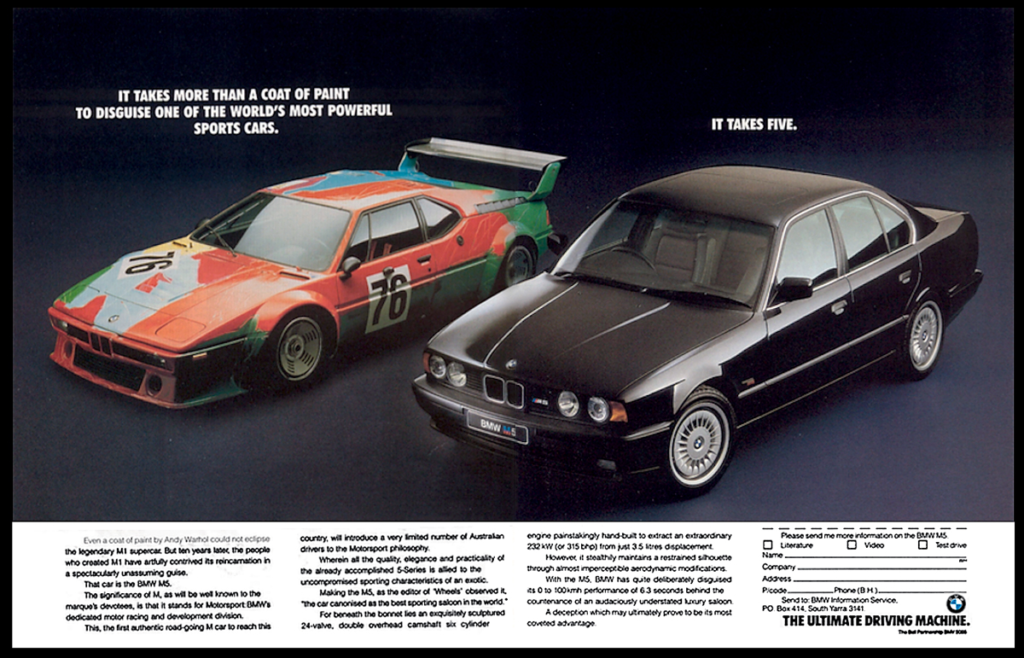
M5 引擎的血統傳統上可以追溯到 BMW M1 的「六」M88,儘管真正的祖先是 BMW 3.0 CSL。不帶乾式油底殼的 M88/3 版本分配給歐洲的 E28 M5,而第一台標記為 S38B35 的引擎是其在美國的「催化」版本。E34 上的 S38 引擎繼承了鐵缸體和 24 氣門 DOHC 汽缸蓋。
宝马与梅赛德斯的创新挡风玻璃雨刷系统相媲美,该系统通过延长雨刷的触及范围并在底部增加一个装置来提高低速时刮片的附着力,从而清洁了 86% 的玻璃。他们还推出了一项独特的功能,即拉动并握住车门把手即可激活锁加热器,这是针对较冷气候的巧妙添加。
从由伺服器而不是弹簧操作的折叠式后排头枕,到可同时控制牵引力损失和突然减速的更复杂的牵引力控制系统,宝马似乎决心不仅要参与竞争,还要引领创新。每款车型的新功能都旨在超越其他车型,宝马不断改进其设计以应对梅赛德斯的进步。
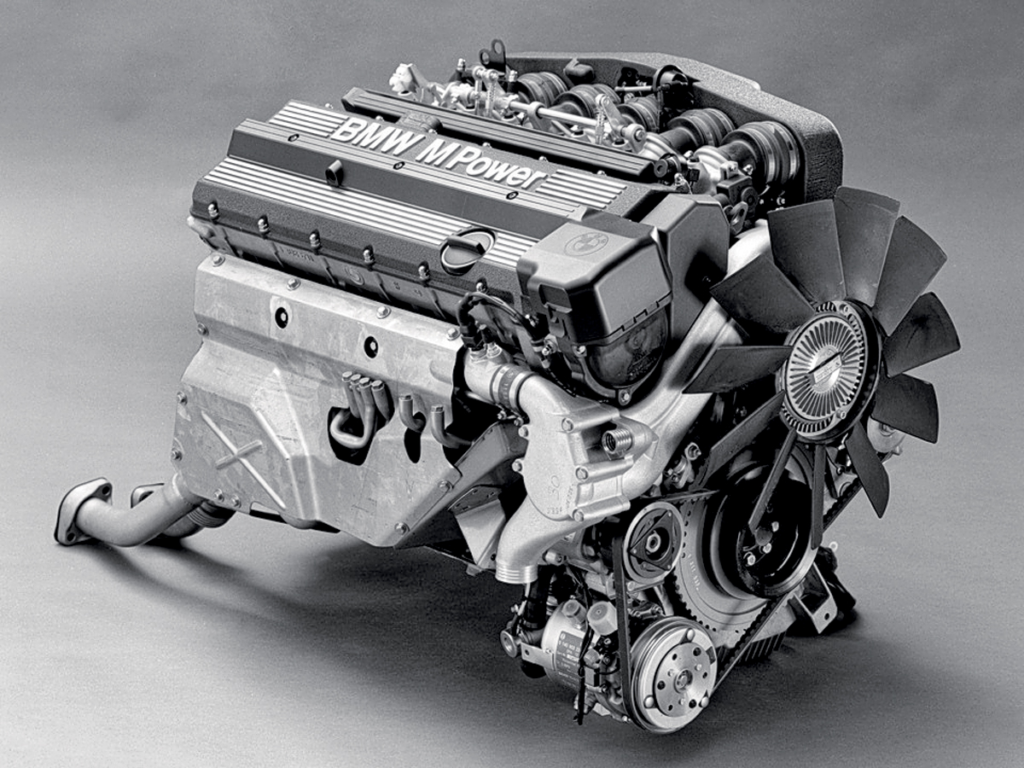
改款前的 M5 的 S38B36 引擎(315 匹馬力)實際上排氣量為 3535 cc,但被指定為 3.6,以區別於 M5 E28 上排氣量為 3453 cc 的前代引擎。
此外,宝马的目录还为 M5 的操控特性提供了理论依据,表明有意将中性调至轻微转向不足,并在加速时过渡到转向过度——这或许是对“124”“漂移”特性的认可。
这种针锋相对的竞争不仅突破了汽车技术的界限,也凸显了两个品牌之间激烈的竞争精神。虽然 E34 一度领先于 W124,但它未能复制 12 缸 E32 的突破性影响。尽管与“七”共享平台,“五”始终在追赶,采用了旅行车车身、全轮驱动和增强的安全功能等创新,这些创新与梅赛德斯的开创性如出一辙。宝马 M5 仍然是这场激烈竞争的纪念碑,展示了竞争如何推动汽车行业的创新和卓越。
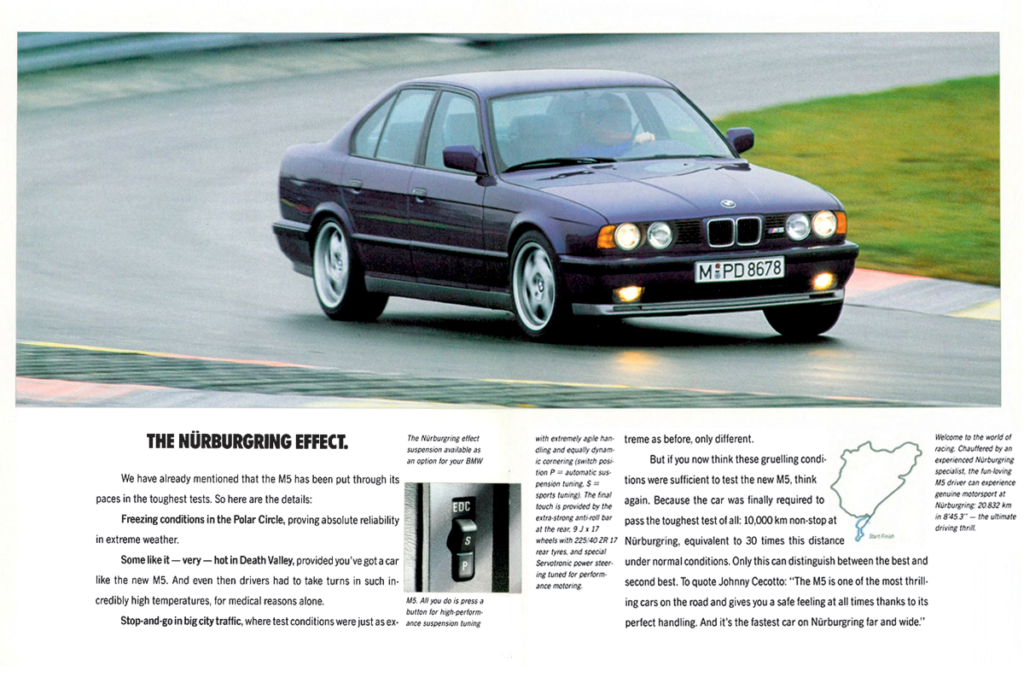
紐柏林效應意味著,在測試過程中,配備自適應EDC減震器的寶馬M5轎車在紐柏林「北環路」上完成了一萬公里不間斷行駛,並創下了8’45.3」的最好成績(在20,832公里的賽道上)。
三年前,为纪念梅赛德斯 500 E 诞生 30 周年,保时捷新闻部发布了对 Typ 2758 项目负责人 Michael Hölscher 的采访。Hölscher 随后在播客中进一步揭示了这款标志性车型的开发细节。他澄清说,这款轿车的布局、从 500 SL 敞篷跑车中选择的发动机和变速箱,以及它的设计和空气动力学都是由梅赛德斯独自决定的。保时捷的主要任务是将这些组件集成到 W124 底盘中,该底盘最初并非设计用于容纳 V8 发动机。
此次合作需要进行重大改造,包括重新安置进气管、重新布置制动和燃油管路、调整中央隧道、拓宽赛道以及开展全面的驾驶测试计划。有趣的是,梅赛德斯选择不将纽伯格林赛道的调校纳入该项目,强调客户的要求对保时捷来说是至关重要的。
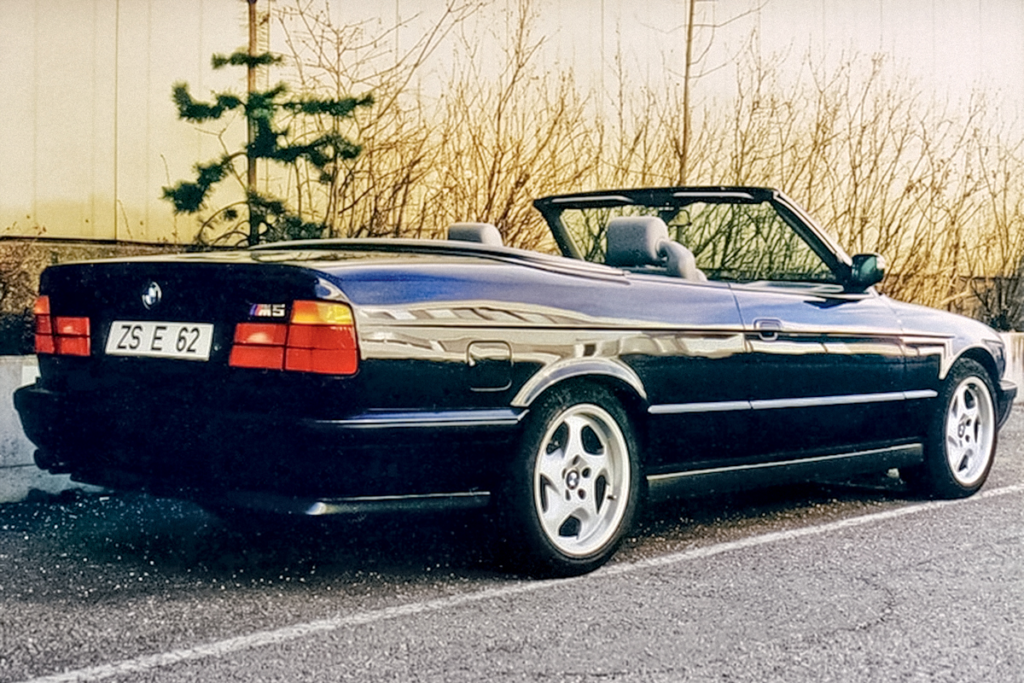
在 1989 年日內瓦車展上,原本應該展示一款採用 E35 車身的敞篷 M5,但在首映前一周,寶馬擔心這會損害對開放式 M3 的需求,因此取消了該項目。該原型機於 2009 年才亮相。
祖文豪森的一项显著创新是电子发动机管理系统的开发。事实上,500 E 对梅赛德斯和保时捷来说都是开创性的,因为它是第一款配备 CAN 总线系统的汽车。
Hölscher 还揭穿了 500 E 无法在辛德芬根装配线上生产的说法,因为它的前挡泥板太宽了,据说是由保时捷设计的。他解释说,这些挡泥板实际上是梅赛德斯设计师设计的,他们非常清楚装配线上的限制。决定不改装辛德芬根工厂的设备以安装更宽的挡泥板,而是将某些生产阶段外包给保时捷,这是一种具有成本效益的策略。这提出了一个有趣的可能性:也许梅赛德斯打算在一个独特的地点组装这款特殊的轿车,远离标准生产线,就像宝马的做法一样。
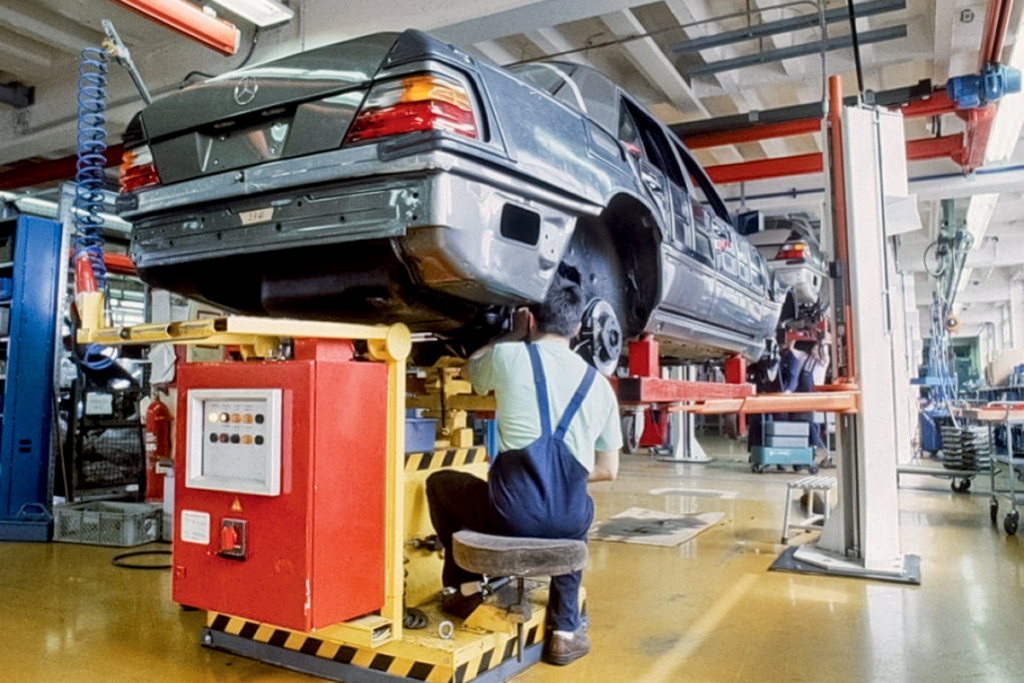
在保時捷工廠,梅賽德斯汽車的組裝沒有傳送帶,而是透過升降機和推車進行。這些汽車的 VIN 代碼應包含數字 124.036。
最终,梅赛德斯 500 E 在三个地点组装。冲压车身面板通过卡车从辛德芬根运到祖文豪森,保时捷在 Reutter Bau 大楼添加零件并将其组装成车架——该大楼以历史悠久的 Reutter Karosseriewerk 命名,这家车身修理厂自 1906 年以来一直与费迪南德·保时捷合作,并在早期保时捷车身中发挥了重要作用。初步组装后,车架被送回辛德芬登进行喷漆,然后送回祖文豪森在 Rössle Bau 工厂进行最终组装,该工厂之前是保时捷 959 的生产基地。
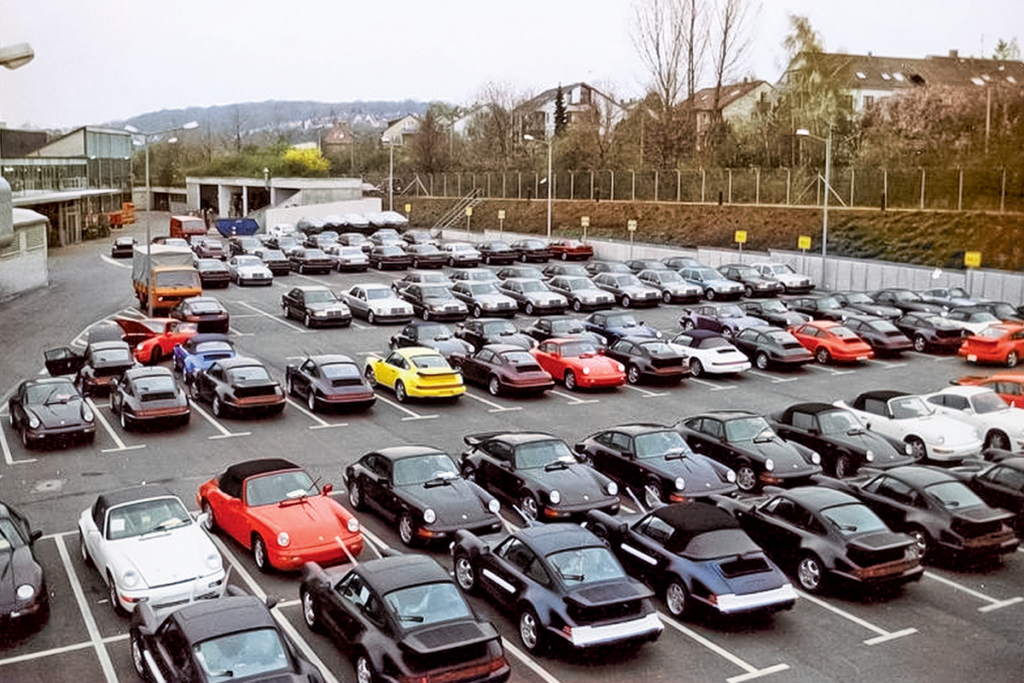
90 年代初,祖文豪森工廠的成品:背景是各種保時捷 964 和 40 輛賓士。
这一过程的物流复杂性相当高;制造每辆车需要 18 天。尽管如此,生产过程被证明比宝马 M5 更有效率。梅赛德斯最初计划保时捷每天生产 10 辆汽车,但由于需求旺盛,生产率翻了一番。
500 E 的售价高于 S 级,为 135,000 德国马克,1992 年需求和产量达到顶峰,很快过渡到 E 500,作为 1993 年改款的一部分,整个“124”系列变成了 E 级。虽然工程设计保持不变,但价格上涨至 146,000 马克导致销量下降,最终于 1995 年停止生产。然而,动力较弱的 400 E(后来的 E 420)一直持续到 1996 年,产量是 S 级的两倍。
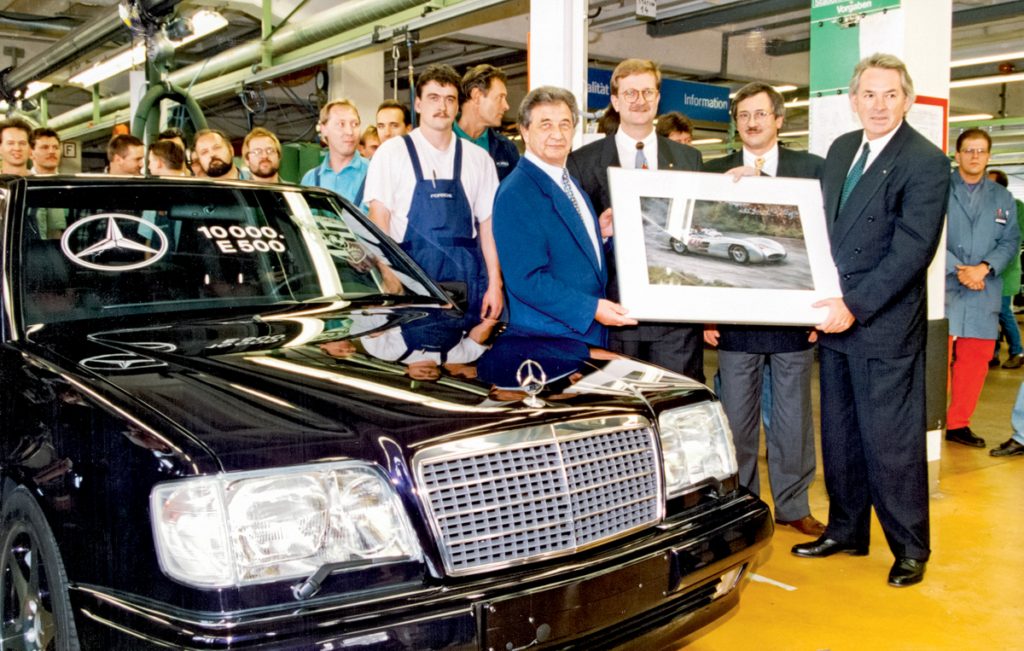
第 10,000 輛“五百”梅賽德斯於 1994 年 10 月生產 – 已經改款為 E 500。此後,又組裝了479台。這輛車被贈予漢斯·赫爾曼 (Hans Herrmann),他曾在 1950 年代代表梅賽德斯參加一級方程式賽車,並於 1970 年為保時捷贏得了首屆勒芒冠軍。
该项目不仅稳定了保时捷的财务状况,还为奥迪 RS2 等未来项目奠定了基础,保时捷在这些项目中发挥了更大的工程影响力。迈克尔·霍尔舍尔的领导力不仅限于这个项目,他在 2016 年退休前还为 Carrera GT 和保时捷 918 Spyder 的开发做出了贡献。
梅赛德斯通过 500 E 项目认识到了高性能车型的利润丰厚性,于 1993 年决定将汽车行业的这一“鱼子酱”独家保留,从而发布了第一款梅赛德斯 C 36 AMG,并为如今众所周知的未来高性能创新奠定了基础。
照片:BMW|梅賽德斯-奔馳 |謝爾蓋·茲奈姆斯基
這是翻譯。您可以在這裡閱讀原文: Эхо друг друга: как создавались BMW M5 и Mercedes-Benz 500 E из нашегорероотеста

出版 六月 20, 2024 • 4m

